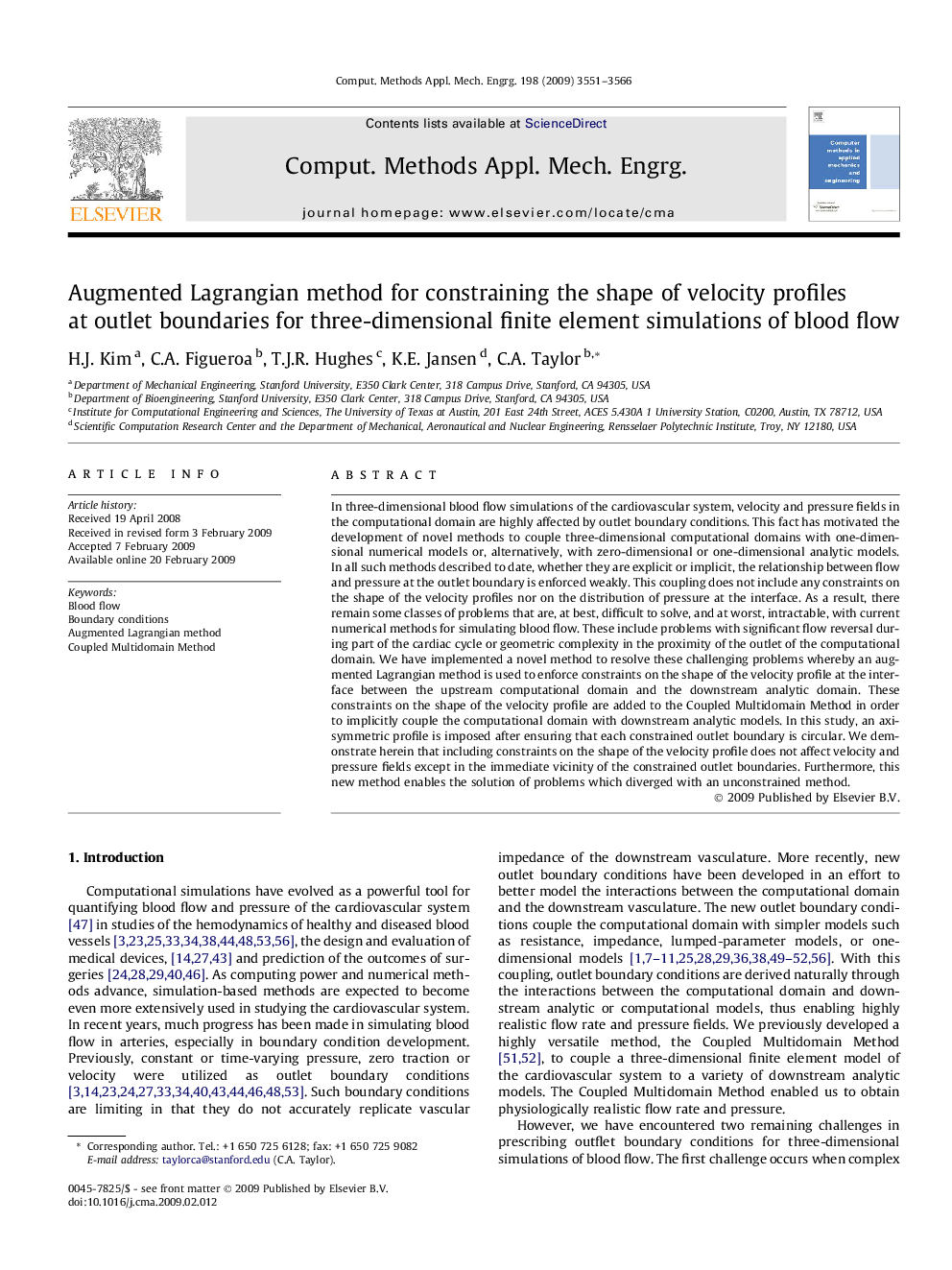| Article ID | Journal | Published Year | Pages | File Type |
|---|---|---|---|---|
| 499163 | Computer Methods in Applied Mechanics and Engineering | 2009 | 16 Pages |
In three-dimensional blood flow simulations of the cardiovascular system, velocity and pressure fields in the computational domain are highly affected by outlet boundary conditions. This fact has motivated the development of novel methods to couple three-dimensional computational domains with one-dimensional numerical models or, alternatively, with zero-dimensional or one-dimensional analytic models. In all such methods described to date, whether they are explicit or implicit, the relationship between flow and pressure at the outlet boundary is enforced weakly. This coupling does not include any constraints on the shape of the velocity profiles nor on the distribution of pressure at the interface. As a result, there remain some classes of problems that are, at best, difficult to solve, and at worst, intractable, with current numerical methods for simulating blood flow. These include problems with significant flow reversal during part of the cardiac cycle or geometric complexity in the proximity of the outlet of the computational domain. We have implemented a novel method to resolve these challenging problems whereby an augmented Lagrangian method is used to enforce constraints on the shape of the velocity profile at the interface between the upstream computational domain and the downstream analytic domain. These constraints on the shape of the velocity profile are added to the Coupled Multidomain Method in order to implicitly couple the computational domain with downstream analytic models. In this study, an axisymmetric profile is imposed after ensuring that each constrained outlet boundary is circular. We demonstrate herein that including constraints on the shape of the velocity profile does not affect velocity and pressure fields except in the immediate vicinity of the constrained outlet boundaries. Furthermore, this new method enables the solution of problems which diverged with an unconstrained method.
